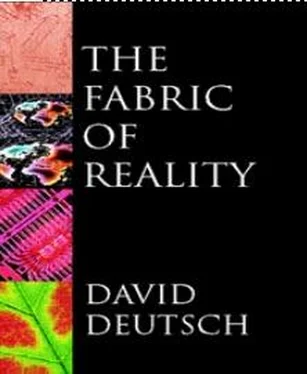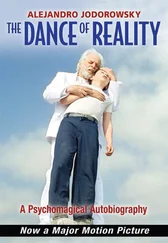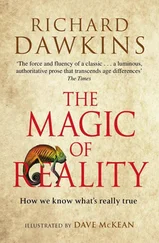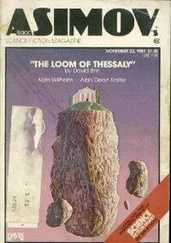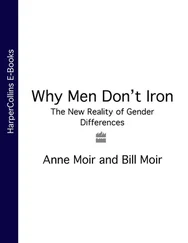David Deutch - The Fabric of Reality
Здесь есть возможность читать онлайн «David Deutch - The Fabric of Reality» весь текст электронной книги совершенно бесплатно (целиком полную версию без сокращений). В некоторых случаях можно слушать аудио, скачать через торрент в формате fb2 и присутствует краткое содержание. ISBN: , Жанр: Физика, Философия, на английском языке. Описание произведения, (предисловие) а так же отзывы посетителей доступны на портале библиотеки ЛибКат.
- Название:The Fabric of Reality
- Автор:
- Жанр:
- Год:неизвестен
- ISBN:0-7139-9061-9
- Рейтинг книги:4 / 5. Голосов: 2
-
Избранное:Добавить в избранное
- Отзывы:
-
Ваша оценка:
- 80
- 1
- 2
- 3
- 4
- 5
The Fabric of Reality: краткое содержание, описание и аннотация
Предлагаем к чтению аннотацию, описание, краткое содержание или предисловие (зависит от того, что написал сам автор книги «The Fabric of Reality»). Если вы не нашли необходимую информацию о книге — напишите в комментариях, мы постараемся отыскать её.
The Fabric of Reality — читать онлайн бесплатно полную книгу (весь текст) целиком
Ниже представлен текст книги, разбитый по страницам. Система сохранения места последней прочитанной страницы, позволяет с удобством читать онлайн бесплатно книгу «The Fabric of Reality», без необходимости каждый раз заново искать на чём Вы остановились. Поставьте закладку, и сможете в любой момент перейти на страницу, на которой закончили чтение.
Интервал:
Закладка:
But all that is only to criticize intuitionism from the outside. It is no disproof; nor can intuitionism ever be disproved. If someone insists that a self-consistent proposition is self-evident to them, just as if they insist that they alone exist, they cannot be proved wrong. However, as with solipsism generally, the truly fatal flaw of intuitionism is revealed not when it is attacked, but when it is taken seriously in its own terms, as an explanation of its own, arbitrarily truncated world. Intuitionists believe in the reality of the finite natural numbers 1, 2, 3, …, and even 10,949,769,651,859. But the intuitive argument that because each of these numbers has a successor, they form an infinite sequence, is in the intuitionists’ view no more than a self-delusion or affectation and is literally untenable. But by severing the link between their version of the abstract ‘natural numbers’ and the intuitions that those numbers were originally intended to formalize, intuitionists have also denied themselves the usual explanatory structure through which natural numbers are understood. This raises a problem for anyone who prefers explanations to unexplained complications. Instead of solving that problem by providing an alternative or deeper explanatory structure for the natural numbers, intuitionism does exactly what the Inquisition did, and what solipsists do: it retreats still further from explanation. It introduces further unexplained complications (in this case the denial of the law of the excluded middle) whose only purpose is to allow intuitionists to behave as if their opponents’ explanation were true, while drawing no conclusions about reality from this.
Just as solipsism starts with the motivation of simplifying a frighteningly diverse and uncertain world, but when taken seriously turns out to be realism plus some unnecessary complications, so intuitionism ends up being one of the most counter-intuitive doctrines that has ever been seriously advocated.
David Hilbert proposed a much more commonsensical — but still ultimately doomed — plan to ‘establish once and for all the certitude of mathematical methods’. Hilbert’s plan was based on the idea of consistency. He hoped to lay down, once and for all, a complete set of modern rules of inference for mathematical proofs, with certain properties. They would be finite in number. They would be straightforwardly applicable, so that determining whether any purported proof satisfied them or not would be an uncontroversial exercise. Preferably, the rules would be intuitively self-evident, but that was not an overriding consideration for the pragmatic Hilbert. He would be satisfied if the rules corresponded only moderately well to intuition, provided that he could be sure that they were self-consistent. That is, if the rules designated a given proof as valid, he wanted to be sure that they could never designate any proof with the opposite conclusion as valid. How could he be sure of such a thing? This time, consistency would have to be proved, using a method of proof which itself adhered to the same rules of inference. Then Hilbert hoped that Aristotelian completeness and certainty would be restored, and that every true mathematical statement would in principle be provable under the rules, and that no false statement would be. In 1900, to mark the turn of the century, Hilbert published a list of problems that he hoped mathematicians might be able to solve during the course of the twentieth century. The tenth problem was to find a set of rules of inference with the above properties, and, by their own standards, to prove them consistent.
Hilbert was to be definitively disappointed. Thirty-one years later, Kurt Gödel revolutionized proof theory with a root-and-branch refutation from which the mathematical and philosophical worlds are still reeling: he proved that Hilbert’s tenth problem is insoluble. Gödel proved first that any set of rules of inference that is capable of correctly validating even the proofs of ordinary arithmetic could never validate a proof of its own consistency. Therefore there is no hope of finding the provably consistent set of rules that Hilbert envisaged. Second, Gödel proved that if a set of rules of inference in some (sufficiently rich) branch of mathematics is consistent (whether provably so or not), then within that branch of mathematics there must exist valid methods of proof that those rules fail to designate as valid. This is called Gödel’s incompleteness theorem . To prove his theorems, Gödel used a remarkable extension of the Cantor ‘diagonal argument’ that I mentioned in Chapter 6. He began by considering any consistent set of rules of inference. Then he showed how to construct a proposition which could neither be proved nor disproved under those rules. Then he proved that that proposition would be true.
If Hilbert’s programme had worked, it would have been bad news for the conception of reality that I am promoting in this book, for it would have removed the necessity for understanding in judging mathematical ideas. Anyone — or any mindless machine — that could learn Hilbert’s hoped-for rules of inference by heart would be as good a judge of mathematical propositions as the ablest mathematician, yet without needing the mathematician’s insight or understanding, or even having the remotest clue as to what the propositions were about. In principle, it would be possible to make new mathematical discoveries without knowing any mathematics at all, beyond Hilbert’s rules. One would simply check through all possible strings of letters and mathematical symbols in alphabetical order, until one of them passed the test for being a proof or disproof of some famous unsolved conjecture. In principle, one could settle any mathematical controversy without ever understanding it — without even knowing the meanings of the symbols, let alone understanding how the proof worked, or what it proved, or what the method of proof was, or why it was reliable.
It may seem that the achievement of a unified standard of proof in mathematics could at least have helped us in the overall drive towards unification — that is, the ‘deepening’ of our knowledge that I referred to in Chapter 1. But the opposite is the case. Like the predictive ‘theory of everything’ in physics, Hilbert’s rules would have told us almost nothing about the fabric of reality. They would, as far as mathematics goes, have realized the ultimate reductionist vision, predicting everything (in principle) but explaining nothing. Moreover, if mathematics had been reductionist then all the undesirable features which I argued in Chapter 1are absent from the structure of human knowledge would have been present in mathematics: mathematical ideas would have formed a hierarchy, with Hilbert’s rules at its root. Mathematical truths whose verification from the rules was very complex would have been objectively less fundamental than those that could be verified immediately from the rules. Since there could have been only a finite supply of such fundamental truths, as time went on mathematics would have had to concern itself with ever less fundamental problems. Mathematics might well have come to an end, under this dismal hypothesis. If it did not, it would inevitably have fragmented into ever more arcane specialities, as the complexity of the ‘emergent’ issues that mathematicians would have been forced to study increased, and as the connections between those issues and the foundations of the subject became ever more remote.
Thanks to Goedel, we know that there will never be a fixed method of determining whether a mathematical proposition is true, any more than there is a fixed way of determining whether a scientific theory is true. Nor will there ever be a fixed way of generating new mathematical knowledge. Therefore progress in mathematics will always depend on the exercise of creativity. It will always be possible, and necessary, for mathematicians to invent new types of proof. They will validate them by new arguments and by new modes of explanation depending on their ever improving understanding of the abstract entities involved. Gödel’s own theorems were a case in point: to prove them, he had to invent a new method of proof. I said the method was based on the ‘diagonal argument’, but Gödel extended that argument in a new way. Nothing had ever been proved in this way before; no rules of inference laid down by someone who had never seen Gödel’s method could possibly have been prescient enough to designate it as valid. Yet it is self-evidently valid. Where did this self-evidentness come from? It came from Gödel’s understanding of the nature of proof. Gödel’s proofs are as compelling as any in mathematics, but only if one first understands the explanation that accompanies them.
Читать дальшеИнтервал:
Закладка:
Похожие книги на «The Fabric of Reality»
Представляем Вашему вниманию похожие книги на «The Fabric of Reality» списком для выбора. Мы отобрали схожую по названию и смыслу литературу в надежде предоставить читателям больше вариантов отыскать новые, интересные, ещё непрочитанные произведения.
Обсуждение, отзывы о книге «The Fabric of Reality» и просто собственные мнения читателей. Оставьте ваши комментарии, напишите, что Вы думаете о произведении, его смысле или главных героях. Укажите что конкретно понравилось, а что нет, и почему Вы так считаете.
